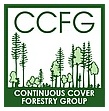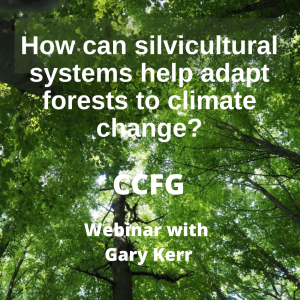Study Tour To Wallonia, Belgium
Monday 2nd – Thursday 5th September 2024
We are delighted to announce that we plan to run a study tour to Wallonia, Belgium from Wednesday 2nd – Thursday 5th September 2024, in conjunction with Pro Silva Wallonia.
Proprosed programme
Monday 2nd September 2024: Members will make their own way to the hotel in Namur, ready to depart for the forest in the morning.
Tuesday 3rd September 2024: Visit of the forest estate of the University of Namur, led by Charles Debois, former manager of the estate and President of Pro Silva Wallonia.
Morning:
– 18ha of mixed natural regeneration, 6 years after spruce clear-cut. Effects of harvesting and preservation of pre-existing native Oak, Birch and Scots Pine seedlings.
– monitoring and operations in natural regeneration (especially in favour of oak) in the understory of an old Scots Pine stand (6 ha).
– Small forest operations (pruning, clearing) of natural Oak seedlings scattered among the numerous natural seedlings of Beech and Birch in an old Beech-Oak stand
Afternoon:
– Oak and Hornbeam stand and Oak and Ash stand : large-wood harvesting method and managing firewood
– Economical results of CCF management of the estate. This study is based on inventories carried out between 1979 and 2019 and a compilation of all timber sales of this period.
Wednesday 4th September 2024 : Visit of the Community forests of “Vencimont” and “Bourseigne-Neuve”, in the Ardenne Region of Wallonia. Christophe Moreau, the forester of this district will show us different examples of CCF management:
– Diversification experiments: understory planting in conifer stands, saving oak seedlings in natural regeneration, etc.
– Management in Spruce stands that are now reaching maturity and are not in optimum site conditions
– Small forest operations in natural regeneration, pruning and optimizing young mixed stands
– Evolution of stands and discussion on the effect of the droughts of recent years.
– Soil protection and tracks
Thursday 5th septembrer 2024 (morning) : Visit of the village forest of Fernelmont (15 km of Namur)
We will visit two oak plantations (1986-1990) where different silvicultural scenarios have been tested as part of a scientific experiment. The experiment aimed to compare different initial candidate-tree (CT) density and to assess the optimal target-tree (TT) density. This experiment is particularly helpfull to quantify the effect of thinning (or crop tree release) on tree growth (with observed annual increment up to 1 cm/year) and timber quality.
You will need to arrange and pay for your own hotel and travel but please do not book yet (until we are certain we have enough numbers to make this tour viable). We hope to confirm that we have enough members booked at the beginning of June, at which point we will encourage you to book your travel and a room in the hotel (IBIS Centre Namur). We will also require a non-refundable £50 deposit, towards the cost of the coach and evening meals (the total cost will be confirmed in early June).
Register to attend by completing the form included.
Please note, we have a maximum of 20 places in total, so please complete the registration form early to avoid disappointment.
Non-members may also apply; however if over-subscribed, preference will be given to members.
STUDENT PLACES
We are also offering up to two subsidised places to student members, which will include a partial subsidy of your hotel costs (in addition to arranging your own travel). If you would like to be considered for one of these places, please complete the form, including a statement (1 side of A4/ 500 words) explaining exactly why you as an individual would like to attend this study tour, with as many details as possible. The deadline for this is also 31st May.
|
Deadline for registration is Friday 31st May 2024 (but some places are already allocated to those who expressed an interest earlier – so book yours now!) Register to attend by completing the Registration Form. |




 The talk will describe the main silvicultural systems we can use to manage forests and give a personal view about their application in Britain. In addition, the talk will give a summary of a the main risks to forests from climate change, the possible impacts and the evidence base for how the use of continuous cover can help mitigate these risks. Finally, the talk will consider how best to communicate ‘how to do continuous cover’ to new audiences. Along the way Gary will be asking the audience some questions, so have a paper and pen handy and be honest with yourself when the answers are revealed!
The talk will describe the main silvicultural systems we can use to manage forests and give a personal view about their application in Britain. In addition, the talk will give a summary of a the main risks to forests from climate change, the possible impacts and the evidence base for how the use of continuous cover can help mitigate these risks. Finally, the talk will consider how best to communicate ‘how to do continuous cover’ to new audiences. Along the way Gary will be asking the audience some questions, so have a paper and pen handy and be honest with yourself when the answers are revealed! Research until September 23. The main thrust of his work has been applied silvicultural research and this has led to over 50 papers in peer reviewed journals, 16 Forestry Commission publications and over 50 articles in professional publications communicating the results of research. For the last ten years his work has focussed on alternative approaches to management and continuous cover silviculture. He was the Editor-in-Chief of Forestry: An International Journal of Forest Research, published by Oxford University Press for 20 years. After retiring from Forest Research he divides his time between working as the Commissioning Editor for the Quarterly Journal of Forestry, Chairing the Scientific Advisory Board of the European Forest Institute and continuing his association with FR as a Research Fellow.
Research until September 23. The main thrust of his work has been applied silvicultural research and this has led to over 50 papers in peer reviewed journals, 16 Forestry Commission publications and over 50 articles in professional publications communicating the results of research. For the last ten years his work has focussed on alternative approaches to management and continuous cover silviculture. He was the Editor-in-Chief of Forestry: An International Journal of Forest Research, published by Oxford University Press for 20 years. After retiring from Forest Research he divides his time between working as the Commissioning Editor for the Quarterly Journal of Forestry, Chairing the Scientific Advisory Board of the European Forest Institute and continuing his association with FR as a Research Fellow. Continuous Cover Forestry (CCF), i.e. forest management based on ecological principles, has been introduced to Ireland and the UK more than twenty years ago. Whilst in the early days identifying simple and robust methods of transforming plantations to woodlands with more complex structures were the primary concern, ongoing climate change and the recent energy crisis have added new challenges of managing for CCF. Many policymakers including the authors of the recent EU forest strategy and of associated recommendations proposed by the European Forest Institute see CCF as a major instrument for mitigating adverse effects of climate change. In this context, carbon forestry has become a major buzzword and a research field in its own right, however, it is still largely unknown how exactly existing woodlands should be managed for optimising carbon sequestration. Questions like “Is carbon forestry part of or a concept separate from CCF?” or “Can carbon forestry be carried out along with other management objectives or is a special focus required?” are hotly debated. Ongoing climate change and all its localised realisations such as spontaneous gales, droughts, floods and insect calamities can always bring the sudden end to any CCF woodland that we have transformed for many years with great effort. In that situation we may be left with little more than bare ground and methods are needed to establish new CCF
Continuous Cover Forestry (CCF), i.e. forest management based on ecological principles, has been introduced to Ireland and the UK more than twenty years ago. Whilst in the early days identifying simple and robust methods of transforming plantations to woodlands with more complex structures were the primary concern, ongoing climate change and the recent energy crisis have added new challenges of managing for CCF. Many policymakers including the authors of the recent EU forest strategy and of associated recommendations proposed by the European Forest Institute see CCF as a major instrument for mitigating adverse effects of climate change. In this context, carbon forestry has become a major buzzword and a research field in its own right, however, it is still largely unknown how exactly existing woodlands should be managed for optimising carbon sequestration. Questions like “Is carbon forestry part of or a concept separate from CCF?” or “Can carbon forestry be carried out along with other management objectives or is a special focus required?” are hotly debated. Ongoing climate change and all its localised realisations such as spontaneous gales, droughts, floods and insect calamities can always bring the sudden end to any CCF woodland that we have transformed for many years with great effort. In that situation we may be left with little more than bare ground and methods are needed to establish new CCF woodlands from scratch. CCF from scratch may also include the use of coppice systems, particularly the use of coppice with standards and coppice selection systems. Such system can contribute to satisfying the current demand for sustainable energy whilst creating diverse habitats and providing high-quality timber at the same time.
woodlands from scratch. CCF from scratch may also include the use of coppice systems, particularly the use of coppice with standards and coppice selection systems. Such system can contribute to satisfying the current demand for sustainable energy whilst creating diverse habitats and providing high-quality timber at the same time.






